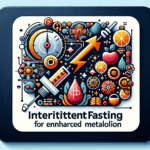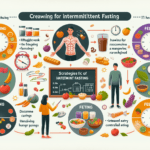If you’ve been searching for effective ways to shed those extra pounds, you may have come across the concept of intermittent fasting. But with so many techniques out there, it can be overwhelming to know which one is best for you. In this article, we’ll explore the various intermittent fasting techniques specifically designed for weight loss. From the popular 16/8 method to the more flexible 5:2 diet, we’ll break down each approach, giving you a concise overview of their benefits and how to get started. So, if you’re ready to take control of your health and achieve your weight loss goals, keep reading to discover the best intermittent fasting techniques for you.

16/8 Intermittent Fasting
Explanation of 16/8 Intermittent Fasting
16/8 intermittent fasting is a popular fasting technique where you restrict your eating window to 8 hours and fast for the remaining 16 hours of the day. This fasting method typically involves skipping breakfast and having your first meal around noon, followed by another meal in the afternoon or evening, and ending the day with dinner. During the fasting period, you are allowed to drink water, coffee, or tea to help curb hunger.
Benefits of 16/8 Intermittent Fasting
One of the main benefits of 16/8 intermittent fasting is its simplicity. It’s relatively easy to implement and can fit into most people’s daily routines. By compressing your eating window, you naturally reduce the number of calories consumed throughout the day, which can lead to weight loss. Additionally, intermittent fasting has been shown to improve insulin sensitivity, reduce inflammation, and enhance autophagy, a cellular process that helps remove damaged cells and promotes cellular renewal.
Tips for Implementing 16/8 Intermittent Fasting
To successfully implement 16/8 intermittent fasting, start by gradually increasing your fasting window. If you typically have breakfast at 8 AM, try pushing it back to 9 AM, and continue to increase the fasting period until you reach 16 hours. It’s important to listen to your body and adjust the fasting window based on how you feel. Stay hydrated during the fasting period, drink plenty of water, and keep busy to distract yourself from any hunger pangs. Additionally, make sure to focus on nutrient-dense foods during your eating window to nourish your body.
Alternate-Day Fasting
Explanation of Alternate-Day Fasting
Alternate-day fasting involves alternating between days of unrestricted eating and fasting. On fasting days, you typically consume only a small number of calories, usually around 500-600, or completely fast. On non-fasting days, you can eat normally without any restrictions.
Benefits of Alternate-Day Fasting
Alternate-day fasting has shown promising results for weight loss. By significantly reducing calorie intake on fasting days, you create a calorie deficit that can lead to fat loss over time. It also helps to regulate insulin levels and may improve markers of health, such as blood pressure and cholesterol levels. Some studies suggest that alternate-day fasting may also have anti-aging and neuroprotective effects.
Tips for Implementing Alternate-Day Fasting
When implementing alternate-day fasting, it’s important to consider your individual tolerance for fasting. Some people may find it easier to start with modified fasting days, where they consume a small number of calories, and gradually progress to full fasting days. Stay hydrated throughout the fasting days, and include plenty of nutrient-dense foods on non-fasting days to ensure you meet your nutritional needs. It’s also important to listen to your body and adjust the fasting schedule if necessary.
5:2 Intermittent Fasting
Explanation of 5:2 Intermittent Fasting
5:2 intermittent fasting involves eating normally for five days of the week and restricting calorie intake to 500-600 calories on two non-consecutive days. On fasting days, individuals typically consume small, low-calorie meals or fast completely.
Benefits of 5:2 Intermittent Fasting
One of the main benefits of 5:2 intermittent fasting is its flexibility. It allows for more freedom in food choices and can easily be integrated into a regular lifestyle. This method has shown effective weight loss results, improved insulin sensitivity, and decreased markers of inflammation. It may also benefit brain health and slow down the aging process.
Tips for Implementing 5:2 Intermittent Fasting
To successfully implement the 5:2 intermittent fasting method, plan your fasting days ahead of time and choose days that will work best with your schedule. Start with modified fasting days, where you consume a small number of calories, and gradually progress to full fasting days if desired. It’s important to focus on nutrient-dense foods on non-fasting days to ensure you meet your nutritional needs. Listen to your body and adjust the fasting schedule as needed.

OMAD (One Meal a Day) Intermittent Fasting
Explanation of OMAD Intermittent Fasting
OMAD, or One Meal a Day, intermittent fasting is a fasting method where you fast for 23 hours and consume all your daily calories in a one-hour eating window.
Benefits of OMAD Intermittent Fasting
OMAD intermittent fasting can simplify meal planning and reduce the time spent on food preparation. It can also lead to significant calorie restriction, which can promote weight loss. This method can improve insulin sensitivity and may enhance mental clarity and focus. OMAD fasting may also help regulate appetite and reduce the feeling of hunger throughout the day.
Tips for Implementing OMAD Intermittent Fasting
When starting OMAD intermittent fasting, it’s important to ease into it gradually. Begin by shortening your eating window and gradually increase your fasting duration. Stay hydrated during the fasting period and incorporate nutrient-dense foods into your one meal to ensure you meet your nutritional needs. It’s also crucial to listen to your body and adjust the fasting schedule based on your individual needs and preferences.
Eat-Stop-Eat Intermittent Fasting
Explanation of Eat-Stop-Eat Intermittent Fasting
Eat-Stop-Eat intermittent fasting involves fasting for a full 24 hours once or twice a week. During the fasting period, you consume no calories, but you are allowed to drink water, coffee, or tea.
Benefits of Eat-Stop-Eat Intermittent Fasting
Eat-Stop-Eat intermittent fasting can be an effective weight loss tool as it creates a significant calorie deficit by eliminating food intake for 24 hours. It promotes fat burning and helps to improve insulin sensitivity. This fasting method has also been linked to increased levels of human growth hormone (HGH), which can promote muscle growth and maintenance.
Tips for Implementing Eat-Stop-Eat Intermittent Fasting
When starting Eat-Stop-Eat intermittent fasting, choose one or two days a week that work best for your fasting schedule. Stay hydrated during the fasting period and consume water, coffee, or tea to help curb hunger. It’s essential to listen to your body and gradually increase the duration of your fasting periods if desired. On non-fasting days, focus on nutrient-dense foods to ensure you meet your nutritional needs.
Warrior Diet Intermittent Fasting
Explanation of Warrior Diet Intermittent Fasting
The Warrior Diet intermittent fasting method involves fasting for 20 hours every day and consuming all your daily calories in a four-hour eating window, often in the evening.
Benefits of Warrior Diet Intermittent Fasting
Warrior Diet intermittent fasting can help regulate hunger and improve insulin sensitivity. It has been associated with increased energy levels and mental clarity during the fasting period. This method may also encourage mindful and intuitive eating, as it allows for larger, satisfying meals after a fasting period.
Tips for Implementing Warrior Diet Intermittent Fasting
To implement the Warrior Diet intermittent fasting method, gradually increase your fasting duration until you reach a 20-hour fast. Stay hydrated during the fasting window and consume water, coffee, or tea to help control hunger. During the four-hour eating window, focus on consuming nutrient-rich foods to meet your nutritional needs. It’s important to listen to your body and make adjustments based on your individual preferences and needs.
Spontaneous Meal Skipping Intermittent Fasting
Explanation of Spontaneous Meal Skipping Intermittent Fasting
Spontaneous meal skipping intermittent fasting is a flexible approach where you simply skip meals as needed, depending on your hunger levels and daily schedule. There are no strict fasting or eating windows to follow.
Benefits of Spontaneous Meal Skipping Intermittent Fasting
Spontaneous meal skipping intermittent fasting allows for flexibility and can be easily adapted to individual preferences and lifestyle. It can naturally reduce overall calorie intake and promote weight loss. This approach helps to develop a more intuitive and mindful relationship with food by listening to your body’s hunger and fullness cues.
Tips for Implementing Spontaneous Meal Skipping Intermittent Fasting
To implement spontaneous meal skipping intermittent fasting, pay attention to your hunger and satiety levels throughout the day. If you’re not hungry, feel free to skip a meal and listen to your body’s cues. Stay hydrated and consume water, coffee, or tea during fasting periods to help curb hunger. Remember to prioritize nutrient-dense foods when you do eat to ensure you meet your nutritional needs.
Extended Fasting
Explanation of Extended Fasting
Extended fasting involves fasting for an extended period of time, typically 24 hours or more. It can range from a few days to several weeks, depending on individual goals and health considerations.
Benefits of Extended Fasting
Extended fasting can have profound effects on the body. It promotes autophagy, a cellular process that helps remove damaged cells and encourages cellular renewal. It can also lead to significant weight loss, improved insulin sensitivity, and reduced inflammation. Extended fasting may have potential benefits for certain health conditions and may even have anti-aging effects.
Tips for Implementing Extended Fasting
If you’re considering extended fasting, it’s important to consult with a healthcare professional, especially if you have any underlying health conditions. Start with shorter fasting periods, such as 24 or 48 hours, and gradually work your way up to longer fasts if desired. Stay hydrated during the fasting period and consume water, herbal tea, or electrolyte beverages as needed. It’s essential to listen to your body and break the fast if you experience any adverse effects or discomfort.
Tips for Choosing the Right Intermittent Fasting Technique for Weight Loss
Factors to consider when choosing an intermittent fasting technique
When choosing the right intermittent fasting technique for weight loss, consider factors such as your lifestyle, daily schedule, and individual preferences. Some techniques, like 16/8 intermittent fasting or spontaneous meal skipping, offer more flexibility and can easily be integrated into your routine. Others, such as alternate-day fasting or extended fasting, may require more planning and preparation.
Consulting with a healthcare professional
Before starting any intermittent fasting technique, it’s important to consult with a healthcare professional, especially if you have any underlying health conditions or are taking medications. They can provide personalized guidance and ensure that intermittent fasting is safe for you.
Experimenting and adjusting the technique to fit personal preferences and lifestyle
Intermittent fasting is not a one-size-fits-all approach, and it’s important to find a technique that works best for you. Experiment with different fasting methods and adjust them to fit your personal preferences and lifestyle. Listen to your body and make modifications as needed to ensure the best results and overall well-being.
Common Challenges and How to Overcome Them During Intermittent Fasting
Hunger and cravings management strategies
One of the common challenges during intermittent fasting is managing hunger and cravings. To overcome this, focus on consuming nutrient-dense foods during your eating window to promote satiety and minimize hunger. Stay hydrated throughout the fasting period and drink water, herbal tea, or black coffee to help curb cravings. Engaging in activities and keeping yourself busy can also distract you from thoughts of food.
Maintaining hydration and electrolyte balance
During fasting periods, it’s crucial to maintain proper hydration and electrolyte balance. Drink plenty of water throughout the day to stay hydrated. You can also consider adding a pinch of salt to your water or consuming electrolyte beverages to replenish electrolytes lost through sweat and urine.
Dealing with social situations and meal planning
Social situations and meal planning can pose challenges during intermittent fasting. Communicate your fasting schedule with friends and family, and seek their support. Plan ahead and bring a healthy snack or meal for yourself if needed. Also, consider adjusting your fasting schedule to align with social events or occasions, ensuring you can still enjoy the experience while maintaining your fasting routine.
In conclusion, there are various intermittent fasting techniques available, each with its own set of benefits and considerations. It’s important to choose the technique that best suits your lifestyle and preferences while ensuring it aligns with your health goals. As with any dietary or lifestyle change, it’s always a good idea to consult with a healthcare professional before starting intermittent fasting. With proper guidance, experimentation, and adjustments, intermittent fasting can be a powerful tool for weight loss and overall well-being.








